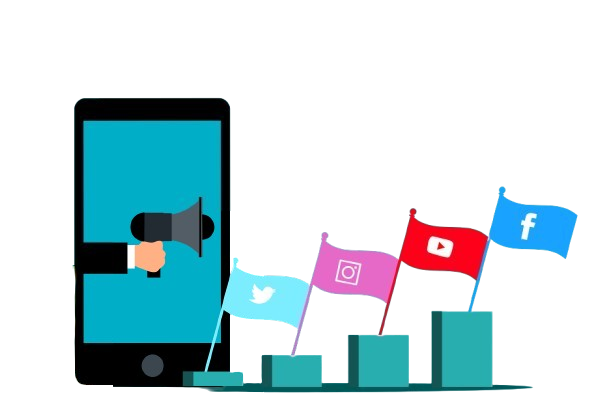Social Media Marketing Services
At ThinkMuse, a top Social Media Marketing agency in Raipur, we assist businesses in leveraging the potential of platforms such as Facebook, Instagram, Twitter, LinkedIn, and others to meet their marketing goals. Our team excels in developing creative, data-driven, and effective social media strategies customized to fit your business objectives.

Why select ThinkMuse for
Social Media Marketing?
Targeted Strategies
Our approach is tailored, not generic. We know that every business is unique, which is why we create personalized social media strategies that address your specific objectives and effectively reach your target audience.
Experienced Team
we stand out as a leading social media marketing agency in Raipur, bringing together experts who have extensive knowledge in managing and optimizing campaigns on all major platforms.
End-to-End Social Media Management
We deliver all services, from crafting strategies to creating content and managing campaigns, to boost your brand’s visibility on social media.
Our Services
At ThinkMuse, we offer a diverse range of social media Marketing services
in Raipur, tailored to maximize your brand’s online
visibility and engagement with your audience.
Content Creation
Content is the core of any successful social media campaign. Our creative team designs visually attractive and engaging content ranging from posts and videos to stories and infographics that speaks to your audience.
Social Media Advertising
We oversee every element of your paid campaigns, whether it’s Facebook Ads, Instagram Ads, or LinkedIn Sponsored Content.
Community Management
We handle your social media accounts, engage with comments, connect with followers, and promote meaningful interactions that cultivate trust.
Benefits of Social Media Marketing
Enhanced Brand Visibility
Our focused strategies boost your presence on social media, enabling your brand to connect with new audiences.
Strengthened Engagement
Through captivating content and prompt interactions, we build a solid relationship between your brand and its audience.
Increased Conversion Rates
By designing customized campaigns that appeal to your audience, we attract more qualified visitors to your website, resulting in improved conversion rates.
Book
Consultation Call

Our Process
Our approach to social media marketing is structured and focused
on delivering results. Here’s an overview of our process.
-
Discovery and Goal Setting
Our first step is to understand your business, industry, and social media goals. This foundational knowledge helps us define the objectives of your campaigns, whether they are aimed at brand awareness, lead generation, or increasing sales.
-
Content Creation
we develop and schedule content tailored to your strategy across the most relevant platforms, ensuring a consistent presence that reflects your brand’s voice and goals. Finally, during Campaign Execution, we carry out both organic and paid campaigns, closely monitoring their performance to ensure they achieve the key metrics we’ve set.
-
Campaign Execution
We carry out both organic and paid campaigns, keeping a close eye on performance to ensure they achieve key metrics.
-
Optimization
Using real-time data and analytics, we refine your campaigns for optimal efficiency and impact.
Frequently Asked Questions

Social media marketing plays a vital role in enhancing brand visibility, interacting with customers, and boosting conversions.
The choice of platforms should be guided by your target audience and industry. For instance, Instagram and Facebook are excellent for visually-driven products, while LinkedIn is more suited for B2B companies. We assist you in selecting the most appropriate platforms based on your objectives.
Absolutely! Social media marketing can enhance your SEO efforts indirectly by driving traffic to your website, boosting brand visibility, and generating backlinks through shared content.
